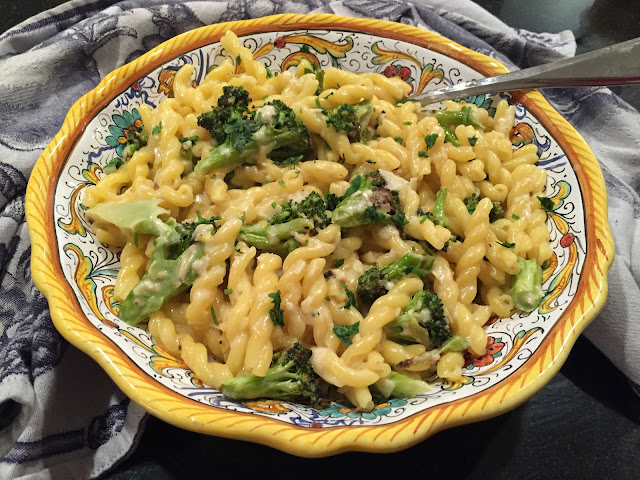Truth be told, the first time I made this recipe, it was a flop. Not that it wasn’t edible. It was. But it had a peculiar shape, due to pilot error. I used a loaf pan that was too small and caused the following chain of events: batter spilling over the sides of the pan, leaving a hollow down the center of the cake; crispy, burned bits on the bottom of the oven; smoke billowing into the kitchen and a loud alarm sounding throughout the house.
Still, that didn’t deter me from trying again. I could tell it was going to be a good cake. And remember I had all those oranges to use up. So this time I followed Jamie’s advice and used the proper size loaf pan – 9″ x 5″ by 2 1/2″. I also followed the recipe exactly, since the first time I added the oil to all the liquid ingredients rather than at the very end. Alright, I did forget to pour the syrup over the cake, but it was wonderful all the same, especially with the glaze over the top.
See for yourself, or rather try it for yourself. But make sure to read the directions thoroughly and follow the recipe and above all, use the right size loaf pan. Otherwise, get your oven cleaner ready.
Blood Orange Yogurt Loaf Cake
- 1 1/2 cups (7 ounces/195 g) all-purpose flour
- 2 teaspoons baking powder
- 1/4 teaspoon salt
- 1 cup (250 ml) unsweetened plain whole-milk or Greek yogurt
- 1 cup (200 g) granulated white sugar
- 3 large eggs
- 3 blood oranges, zested (I used the zest of 2 large Cara Cara oranges)
- 1/2 teaspoon vanilla extract
- 1/2 cup (125 ml) vegetable oil
- Blood Orange Syrup:
- 1/3 cup blood orange juice (or any orange juice)
- 1 tablespoon granulated white sugar
- Glaze:
- 2 tablespoons blood orange juice
- 1 cup (135 g) confectioners’ sugar
- Preheat oven to 350 degrees F (180 degrees C). Butter a standard 9 x 5 x 2 1/2 inch or 8 cup loaf pan, line the bottom with parchment paper, and flour the pan.
- Sift or whisk together the flour, baking powder and salt, and set aside.
- In a large mixing bowl, whisk together the yogurt, sugar, eggs, zest, and vanilla until blended and smooth.
- Slowly whisk the dry ingredients into the wet ingredients just until combined and smooth.
- Fold the oil into the batter, a little at a time, until well-blended and no oil has collected around the edges of the batter.
- Pour the batter into the prepared pan and bake for 45-50 minutes, or until the center of the cake is moist, but set and a tested inserted into the cake comes out clean.
- Prepare the orange syrup by placing the orange juice and sugar in a small saucepan over low heat.
- Cook until warm and the sugar has completely dissolved and the liquid is clear. Set aside to cool slightly.
- When the cake is done, remove from the oven onto a cooling rack that has been placed on top of a large foil-lined baking sheet and allow to cool for 10 minutes.
- Carefully loosen the cake from the pan by running a knife around the edges.
- Turn the cake out of the pan, discard the parchment paper, and then place the cake upright on the cooling rack.
- While the cake is still warm, pour and brush the warm syrup all over the top, allowing it to soak the loaf and run down the sides. Allow to cool completely.
- Prepare the glaze by stirring the orange juice into the sugar until the sugar has dissolved and the glaze is smooth. The glaze should be thin enough to spoon or drizzle over the cake but just stiff enough that some of the glaze will cling to the sides.


.jpeg)








.jpeg)
.jpeg)
